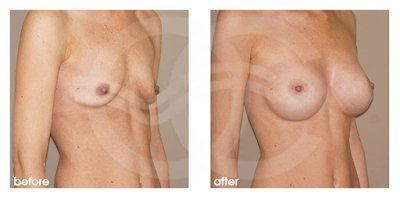Do you dislike your thighs and dread the thought of exposing them on the beach? You’re not alone; many women are self conscious about their thighs.
This lack of body confidence often arises as we age, have
children and gain weight around our middles and bottoms, that becomes much
harder to shift.
If you do succeed in losing weight, you can often be left
with loose, sagging skin or stubborn cellulite, which give the thighs a lumpy
appearance. It’s no wonder a trip to the beach has so many women reaching for a
sarong.
If you want to wear a swimming costume with confidence, you
could consider having a thigh lift – a cosmetic procedure to remove excess fat
and skin and improve the contours of the thighs.
What is a thigh lift and how is it performed?
A thigh lift (also
called a crural lift) literally involves lifting the loose, sagging skin on the
upper and outer thigh upwards towards the groin. Once pulled up, excess skin
and tissue is removed and deep support sutures are placed in the underlying
tissues to help create a tight and toned thigh.
The incisions, which are made in the folds of the groin, are
then sealed with skin sutures. The thigh lift procedure is often carried out in
conjunction with liposuction, in order to remove larger amounts of fat and further
shape and contour the thighs.
What kind of scars should you expect from a thigh lift?
The scars from a thigh lift vary based on the areas to be
treated and the degree of correction. They are usually hidden in the groin
crease, but can sometimes extend along the inner thigh.
Improving the contours of the
outer thigh may require an incision extending from the groin around the hip.
However, all scars are - as much as possible - placed so
that they will be covered by underwear, swimsuits and shorts. At first, scars
will be red but, over time, should flatten, fade and become less noticeable.
Skin tone, elasticity and colour will play a role in the final result.
How long is the recovery from a thigh lift?
It’s possible to have a thigh lift performed on an out
patient basis, under twilight sedation; this means you will not be fully put to
sleep. You will remain awake, but will feel very relaxed and will not feel any
pain.
The benefit of this is you can ‘wake up’ quicker after the
operation, avoid potential nausea and go home sooner. However, should you
prefer full anesthesia that can be arranged.
After your surgery, you will wear compression garments for a
week and you will be unable to bathe or shower during this time. You will be prescribed painkillers to control
pain during the first few days.
It’s important to rest as much as possible for the first
week, avoid too much movement, and move carefully when you do. This will help
keep swelling down and allow the incisions to heal – because of the weight of
gravity, wounds in the thigh area can take longer to heal.
During the second week, you will feel a little more
energised and have less pain, however it is vital to still take it easy and
move with care. We advise that patients should book at least two weeks off work
if they have a desk job and up to a month if they have a physical job.
After two to three weeks it is possible to return to light
activities, but activity should be increased slowly being mindful not to allow
yourself to become swollen. After six weeks you should feel fully recovered,
although it will take 6-12 months for everything to fully heal internally and
for you to see the final result.
How much does a thigh lift cost?
Thigh lift surgery here at
Ocean Clinic Marbella, usually costs between €4,000 to €4,500. For an exact
quote, contact us for a free consultation at which you can meet with a surgeon and discuss your
goals.











